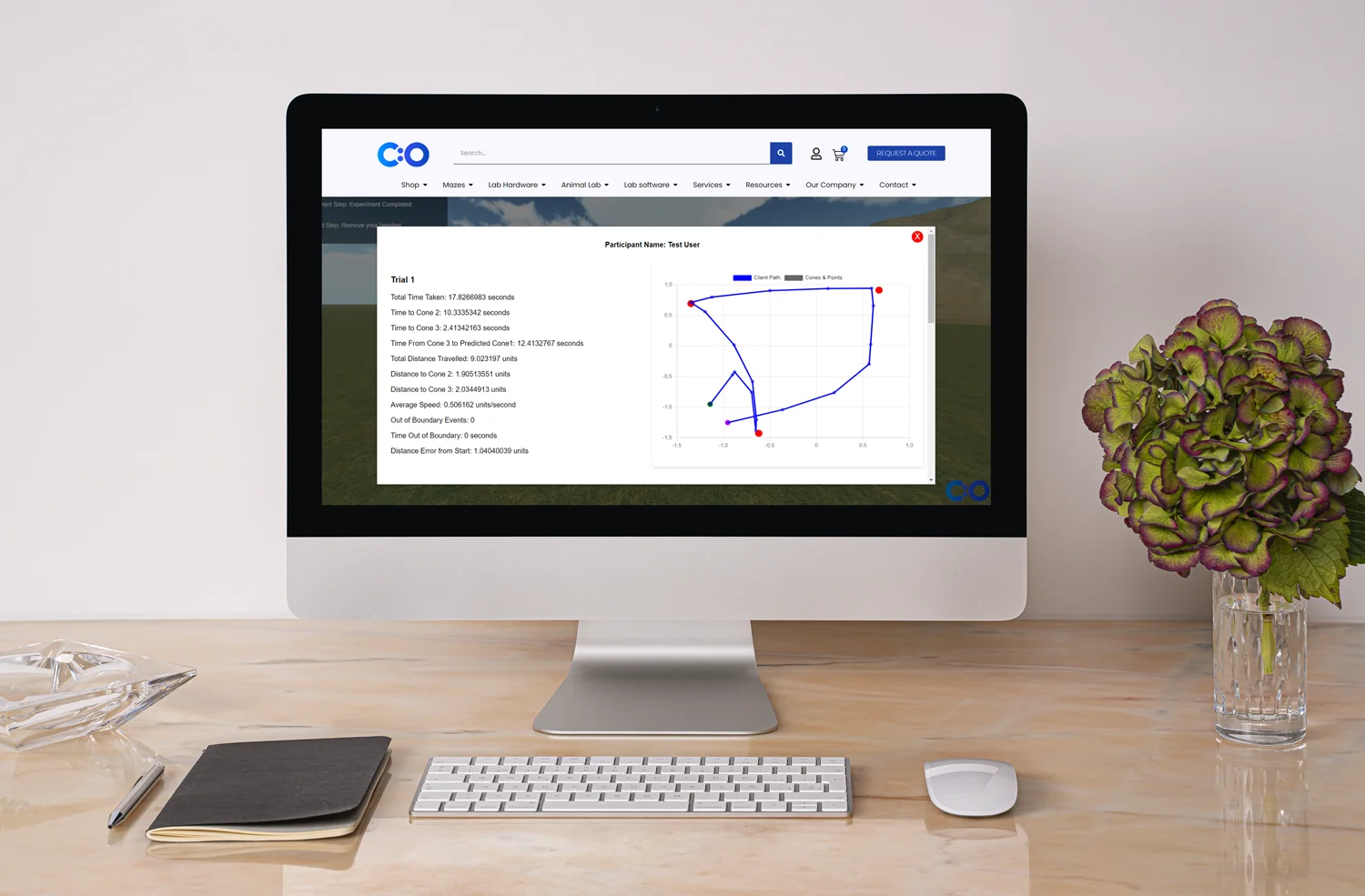

The world is now facing an epidemic of mental health disorders which due to their nature can be extremely challenging to study, diagnose, and treat. This is especially true of schizophrenia, a chronic mental health condition characterized by various clinical symptoms including distorted perception of reality, altered behavior, withdrawal from social relations, and inappropriate and sometimes even dangerous behaviors and feelings. Although it is not the most prevalent mental health disorder, it is associated with a substantial stigma, social impairments, and occupational dysfunction which makes it one of the top contributors to the global burden of diseases worldwide.[1]
With the increasing use of technology around the world, digital tools become more and more important in investigating and treating mental health disorders. In schizophrenia, this is especially important because of several reasons. The first is the fluctuating disease course which requires a real-world data recording to provide a better understanding of the state of a particular patient and patients population overall. The second is the multimodal disease features which can be easily measured by means of modern portable devices and wearables. The third is the opportunity to overcome the social and psychological problems associated with the need for personal interactions with a doctor or researcher to gather the data because technology allows for remote real-life data acquisition.
Like any other mental health disorder, schizophrenia has well-defined criteria set in the 5th edition of the Diagnostic and Statistical Manual. It requires for more of the two following symptoms to be present for more than 6 months: delusions, hallucinations, disorganized speech, and grossly disorganized or catatonic behavior (these first symptoms are called positive), and negative symptoms such as apathy, depression, and social escape.[2]
he traditional therapeutic and research approach considers mainly these mental health domains when it comes to gathering data in people with schizophrenia.The main way to acquire such data in people with schizophrenia and other mental disorders is assessment through questionnaires and structured or semi-structured interviews. There are many such means developed and validated to separately assess and quantify the extent of the positive and negative symptoms seen in schizophrenia. Such tools include NSA-16 (Negative Symptom Assessment-16), SANS (the Scale for the Assessment of Negative Symptoms), PANSS (Positive and Negative Symptoms Scale), SAPS (Scale for the Assessment of Positive Symptoms), CGI-SCH (Clinical Global Impression Schizophrenia), and other questionnaires and structured interviews.[3]
An important part of the conventional research methodology is structural and functional neuroimaging. Structural neuroimaging methods such as MRI allow to visualize the brain structure and quantify the sizes and volumes of gray and white matter. Functional studies include:
Although these methods are informative, they demand a considerable amount of material and financial resources, but are not portable, which means that assessment may be only discrete, non-continuous. What digital tools can offer is the opportunity to gather data longitudinally which allows exploring the phenotypes of patients with schizophrenia and predict the relapses. Besides that, these can help to investigate the domains which due to the lack of time might be out of the focus of investigators, such as comorbid sleep disturbance, autonomic symptoms, adherence to therapy and other aspects discussed below.
Pill-Sensor System by Peters-Strickland et al.
Insufficient adherence to treatment with a subsequent poor therapeutic outcome is a major problem in people with mental illness. Subjective methods for evaluation, such as self-reports of non-adherence are not efficacious, so a large effort has been done to objectivize the determination of non-adherence.[4] There are semi-objective methods, such as pill-counting and electronic devices capturing pill container openings but still, they do not guarantee that the medication was indeed taken.[5] To address this issue, Peters-Strickland et al. developed and evaluated a digital medicine system for control of sensor-embedded antipsychotic intake.[4]
The system consists of the tablets combined with an ingestible sensor activated in the stomach. Upon activation, the ingested sensor interacts with the external patch-like sensor attached to the skin in the left costal region just in the projection of the stomach. Upon receiving the signal, the sensor transfers it to the paired mobile device, either a smartphone or tablet. The mobile application hosts the patient’s component of the cloud-based software. The data is uploaded through the patient’s component to the cloud for processing. After processing, trends of the patient’s adherence can be accessed through the mobile or web-based application by the healthcare providers or caregivers.
A study conducted by the group of developers headed by Peters-Strickland showed that the developed system enables secure collection and sharing of information on medication ingestion with a high level of patient’s autonomy in using sensors and app.[6] However, more than a quarter participants did not finish the study suggesting that the problem with compliance which this mHealth app for schizophrenia aimed to resolve does not respond fully to this intervention.
Schizophrenia is a disorder with a variable course characterized by relapses and remissions. Relapses are characterized by an increase in symptoms up to psychosis (if the positive symptoms prevail) or catatonic stupor (if negative symptoms prevail) and may have catastrophic consequences for the patients depending on the severity. Treatment is primarily aimed to reduce the relapse rate, but it is rarely achievable to totally preclude them. Predicting relapses thus is one of the major vectors of schizophrenia research.
Barnett et al. showed that smartphone behavioral data can be used to predict relapses with high accuracy.[7] The team of investigators used an existing digital phenotyping research platform to collect and analyze changes in the behavior of the patients in in-patient settings. The platform offers a smartphone app that gathers smartphone usage and in-built sensor data, cloud storage, and data modeling and analysis tools to detect behavioral trends and classify phenotypes. The app collects data passively, without a need for an active input from a user. In the study, prior to relapses, the patients displayed behavioral changes like changes in texting and calls, changing accustomed locations etc. These behavioral changes typically emerged 2 weeks prior to relapse and were reflected by the pattern of smartphone usage, web-search queries, and movement in space tracked with an accelerometer and gyroscope.
Ben-Zeev et al. developed a similar system designed specifically to monitor patients with schizophrenia, CrossCheck. The main difference was in adding some active features to the patient’s monitoring to yield a better prediction.[8] The system consists of a smartphone app, data storage, and analyzing systems. In addition to gathering passive data like app usage patterns, calls, messaging, and data from smartphone-embedded sensors, CrossCheck has a 10-item self-report behavioral measure administered each Monday, Wednesday, and Friday.
The questionnaire is called Ecological Momentary Assessment and is implemented in the app in a step-by-step fashion with one question appearing right after the current one is answered. The questions focus on symptoms of psychosis (e.g., hallucinations and ideations), general mental health (e.g., stress, depression, hopefulness, calmness, clarity of thought), and functioning (e.g., socialization, sleep). Responses range from 0- “Not at all” to 3- “Extremely”. The composite score is derived after all the questions are answered. It may range from -15 to +15 in total; the lower the score, the more the risk of relapse. Such active data acquisition allowed researchers to better detect behavioral changes suggestive of oncoming relapse.
Apps collecting smartphone usage data seems to be a reliable means of monitoring the behavioral changes in schizophrenia patients. However, there are some controversies regarding such an approach which primarily concern data safety and access to personal information. Should the researchers collaborate with the existing systems or should they develop their own systems? What is the extent the data is used and processed? How should privacy be kept? These questions are still pending.
Although schizophrenia is a mental health disorder and the major focus is set on the patients’ behavioral and perceptional domains, research shows that people with schizophrenia may have changes in the functioning of their autonomic nervous system, in particular, its parasympathetic division.[9]
Cella and his team explored how these changes correlate with the disease severity. For data acquisition, they used a wearable that determined the electrodermal activity by measuring the skin conductivity, heart rate via photoplethysmography, and physical activity via the three-dimensional accelerometer. The information was stored in the device memory and was uploaded by researchers for analysis during face-to-face meetings. The researchers were able to identify that people with schizophrenia indeed had a lower heart rate variability and physical activity consistent with parasympathetic dysregulation reported by previous studies, and the magnitude of parasympathetic dysregulation was associated with more severe disease.[10]
Another neglected problem in people with schizophrenia is sleep disturbance. Sleep problems in schizophrenia range from increased sleep latency to distorted sleep architecture and differ in patients depending on medication status and disease duration.[11]
Based on these findings, developers from Northwestern University, USA developed Sleepsight, a system for studying sleep-activity patterns and their correlations in patients with schizophrenia.[12] The system consists of a wearable with an embedded accelerometer for measuring physical activity and photoplethysmography for measuring heart rate, a customized app with self-report disease severity items and assessment of the smartphone usage data, and a smartphone itself. The study reports are still to be published, but preliminary results suggest the system can efficiently gather data in people with schizophrenia.
However, sleep monitoring using only this technology is not fully effectual. The convenient method for studying sleep is polysomnography, a method which involves taking EEG, myography, and ECG at the same time. It would allow for better differentiation of sleep phases and sleep disorders. With already available portative EEG devices, the systems for monitoring sleep in schizophrenia and other mental health disorders would be even more efficient.
Schizophrenia is a multimodal mental health disorder with various domains requiring scientific investigation. Due to the nature of the disease, traditional methods cannot fully cover the needs of research. Technology has shown to facilitate schizophrenia research by providing portable, autonomic, remote means of data acquisition and analysis. This allows for exploring different aspects of the disease. Also, it takes down several associated limitations such as a need for face-to-face contact and offers several advantages such as continuous data gathering and increased amount of data which can be acquired. There are some limitations associated with private data safety and patients’ compliance with using the mHealth apps for schizophrenia. These issues, however, do not diminish the potential benefit brought by digital technology to the field of schizophrenia research.











Dr Louise Corscadden acts as Conduct Science’s Director of Science and Development and Academic Technology Transfer. Her background is in genetics, microbiology, neuroscience, and climate chemistry.

Monday – Friday
9 AM – 5 PM EST
DISCLAIMER: ConductScience and affiliate products are NOT designed for human consumption, testing, or clinical utilization. They are designed for pre-clinical utilization only. Customers purchasing apparatus for the purposes of scientific research or veterinary care affirm adherence to applicable regulatory bodies for the country in which their research or care is conducted.